 |
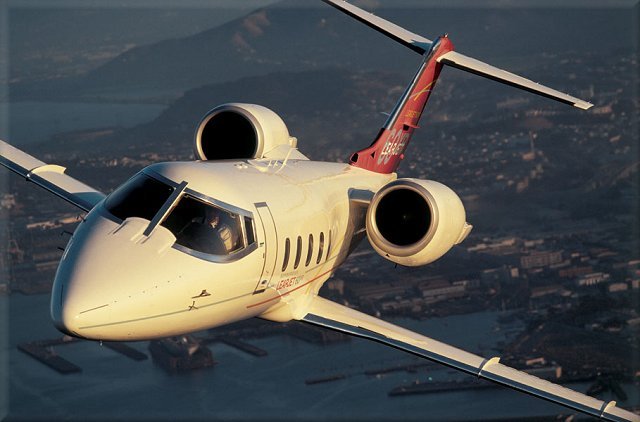 |
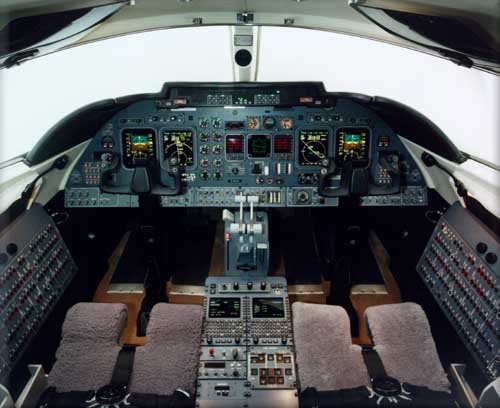 |
 |
 |
 |
 |
 |
A new airplane has been added to my experiences. The wonderful Learjet Model 60.
I recently spent three weeks in the very warm (over 100 degrees every day) desert country of Tuscon, Arizona with the nice, and very competent people of Flight Safety International, learning "...everything you could possibly want to know..." about this outstanding flying machine.
The instructors and administrators at Flight Safety could not have been more hospitable, helpful, and competent than they were. The simulators are first class and the facilities in Tuscon are beautiful.
Thanks to all the people of FSI for a very satisfying experience.
Here is the AIRCRAFT GENERAL DESCRIPTION from the Learjet 60 Pilot's Manual: "The Learjet Model 60 aircraft, manufactured by Learjet,Inc., is an all metal, pressurized, low-wing, turbofan-powered monoplane. The high-aspect ratio, fully cantilevered, swept-back wings with winglets are of conventional riveted construction except for the upper section of the winglets, which is full-depth honeycomb core bonded to the outer skin. The fuselage is of "area rule" design and semi-monocoque construction. Two inverted "V" ventral fins (delta fins) are fitted to the aft section of the tailcone to provide the aircraft with favorable stall recovery characteristics and additional lateral/directional stability. Thrust is provided by two pod-mounted PW305A turbofan engines manufactured by Pratt and Whitney of Canada, Inc. Independent fuel systems supply fuel to the engines with fuel storage available in wing and fuselage tanks. Engine-driven hydraulic pumps supply hydraulic power for braking, extending and retracting the landing gear, wing flaps, and spoilers. The landing gear system is a fully retractable tricycle-type gear with dual main-gear wheels, anti-skid braking, and nose wheel steering. The flight controls are manually controlled with cables, bellcranks, pulleys, and push-pull tubes. Lateral and directional trim is accomplished by means of electrically-actuated trim tabs installed on the left aileron and on the rudder. Longitudinal trim is accomplished by changing the angle of incidence of the horizontal stabilizer with an electrically-operated linear actuator. Aircraft air conditioning systems provide heating, cooling, and pressurization for the crew, passenger, and cabin baggage compartments."
In addition the airplane has a four tube EFIS cockpit.
In the 60 each pound of thrust only has to lift 2.23 pounds of aircraft weight so the climb rate is spectacular. FL410 in about 12 minutes. The airplane cruises at 460 knots at FL410, and uses about the same fuel as the Learjet Model 35. A little less if anything!


In 1969 Cessna entered the jet world with the straight wing Citation 500. In 1979 Cessna took what was at the time a huge leap into the real jet world with the Citation Model 650.
The 650, a mid-sized jet, was to be head and shoulders above the rest of the market. The airplane had Garrett TFE 731 Turbofan engines, a first, and as it turned out, only, for Cessna. Cessna had used only Pratt&Whitney engines up to that time.
The 650 had a revolutionary swept wing with a so called super-critical airfoil design pioneered by Richard Witcolmb of NASA, and made extensive use of metal bonding technology. Boeing assisted in the design with the use of their wind tunnel so it's no surprise that the wing ended up looking a whole lot like the wing used on the 737.
The 650 was produced in three versions; the Citation III, the Citation VI, and the Citation VII. All are the same size and the same shape. The main difference is the engine power, the maximum gross weight, and the avionics installed. The III and the VII models had the -3 engine which produced 3650 pounds of thrust, the VII models had the -4 engine producing 4080 pounds of thrust. The maximum gross weight of the III and VI series airplanes is 22,000 lbs., the max gross weight of the VII series airplanes is 23,000 lbs. This means that the Citation III/VI must pick up 3.01 pounds of airplane for every pound of thrust; the VII only 2.83 pounds for every pound of thrust (powet-to-weight). In the first batch of airplanes (IIIs) the avionics were Sperry electromechanical analog systems; the VI series airplanes had a more sophisticated part alalog part digitl system; the VII series received a completely new digital Honeywell SPZ-8000 avionics suite.
The 650 was to have inter-continental range, New York to LosAngeles at Mach .80. It never was able to achieve that status. During cetification the DC-10 crashed in Chicago when an engine fell off during takeoff. FAR Part 25, the certification standard for the 650, consequently changed and the FAA insisted that the 650 conform to the new standard, FAR Part 25, ammendment 39. This did a couple of things to the 650 certification program; it delayed the certification by just over a year. And secondly, it forced a reduction in the fuel quantity to be reduced by some 900 pounds. So much for "...intercontinental range."
The airplane has a maximum certified altitude of 51,000 ft., which by itself isn't an attribute because from a practical stand point you can't get up there. The real benifit to being certified to FL510 is that the maximum pressure differential in the cabin is 9.3 which produces a cabin altitude of about 6000 feet at the altitudes most common for the 650, which is the upper 30s to the low 40s. The airplane will cruise right at its MMO of .83M and, is therefore, still one of the fastest airplanes in the general aviation fleet.
With only 7300 pounds of fuel (using the standard Single Point Pressure Refueling system, or SPPR) the 650, by most peoples standards, is a bit short on range at approximately 1600nm ,no wind, an average speed of just over 400 kts, and a1500 lb. reserve. This is a bit short for a jet in this class.
The flying qualities of the 650 are quite good. It is very stable, and the control harmony is good. The airplane does no have a ventral fin, which means that the directional stability at high angles is also good and needed no correction for certification. The 650 has a yaw damper but it is not require for dispatch. The rudder system operates conventionaly but is equipped with a pneumatic rudder bias system to keep the rudder forces below 150 pounds during a engine failure.
The lateral control is different than anything I've seen. The ailerons work through the pilots control wheel. The roll spoilers, located right next to the ailerons, operate through the co-pilots control wheel. The two operate in conjunction since they are normally hooked together. During a turn when the aileron on the down going wing deflects up 3 1/2 degrees the roll spoiler deflects 3 1/2 degrees. The roll spoiler on the up wing does not deflect at all. The roll spoilers are going to enhance the roll bup only after a rather abnormal deflection of the control wheel. It is therefore easy to conclude that maybe the roll spoilers are there as much to conteract adverse yaw as to enhance roll capability, since during normal maneuvering (during standard rate turns) the roll spoilers will remain stowed. Since all surfaces that effect lateral control are hydraulically operated there is no aerodynamic feel so the airplane has artificial feel provided by a simple spring cartridge in the lateral control system
The hydraulic system is a closed system operating at 3000 psi. The flaps are electrically operated.
Imagine a cargo plane so huge it could hold 10 railroad locomotives in its bay, or 35 fully loaded semitrailer trucks, or 1,000 Volskwagen Beetles. In other words, picture an ocean-going freighter that flies. That's what Boeing did when dreaming up the Pelican, a 6 million pound flying machine -- equal to the weight of 7.5 fully loaded 747s. For now, it's only a drawing board concept and many years from becoming reality. But if the Pelican were built, like the bird, its wing tips would tilt down and it would glide over the water, rather than fly at high altitude. That would allow it to take advantage of a cushion of air at ground level, known as "ground effect," which would permit it to fly 11,500 miles nonstop and haul up to 1,400 tons in cargo. "As you can see, it's a pretty massive airplane," said Erik Simonsen, spokesman for Boeing's Phantom Works, the company's research and development arm, which designed the ultra large aircraft. Massive? The Pelican would be a flying outlet mall. To give some idea of its enormity, the Pelican would have 76 wheels dangling down for landing gear, needed to distribute all that weight. Most of today's modern airliners have six to 10 wheels. Its wings would span 500 feet and cover more than an acre. They would have to fold up a bit for landing and even more for taxiing. While over the sea, the Pelican would have the most modern radar and navigational equipment to ensure it doesn't ram into an ocean-going ship. "It would skim across the ocean and detect any obstacles or weather far ahead," Simonsen said. Although it wouldn't be nearly as efficient at high altitude, the Pelican would be able to fly as high as 20,000 feet. And although it would be more at home close to the water, it wouldn't be a seaplane; it would be designed to land on runways like at Miami International Airport. It would climb a few thousand feet before reaching land, then slip into the flow of other air traffic and make a normal approach. "There's still a lot of designing to be done," Simonsen said. "But it's pretty interesting technology." Chicago-based Boeing, the world's largest aircraft manufacture, has no target date to build the Pelican, because it has no guarantees that it will have any customers. But it hopes the U.S. Army will buy into the idea and make it a military transport. In a single hop, it would be able haul 17 Army M-1 tanks, which weigh more than 80 tons apiece. Currently, the U.S. Air Force C-5, the largest U.S. military aircraft, can only carry one of those tanks. Eventually, it might become available as a commercial cargo hauler, likely to fly only to about a dozen major global cargo centers, such as Los Angeles, New York, Tokyo and Miami.
The plane would be welcome at Miami International Airport, which ranks No.1 in the nation and No. 4 in the world for international freight -- if the airport's runways could accommodate its girth, said MIA Marketing Manager Chris Mangos. He said the air cargo industry has been using larger freight-hauling aircraft and the Pelican could help increase shipments to Latin America and Europe. Air cargo companies say it's far too early to even consider purchasing a Pelican, for which not even a preliminary price tag has been established. However, if FedEx, the largest cargo company in the world, were to buy just one Pelican, it could carry the same amount of cargo as 21 of its jumbo MD-11 jets, which hold up to 65 tons of cargo apiece. If converted into a commercial airliner, the Pelican would be able to hold about 3,000 passengers. By comparison, when the Airbus A380 starts flying in 2006, it will be the world's largest commercial airliner, able to seat 555 passengers. But, aviation experts say for insurance reasons, it wouldn't be practical for the Pelican to carry passengers. One accident and that insurance company would be wiped out, said Bill Mellberg, an aviation author. However it might be used, the Pelican represents some of the most futuristic thinking out of Boeing's Phantom Works, an aviation think tank which has concocted everything from advanced satellite systems to giant military bombers. All the concepts are designed to be feasible, Simonsen said. But only a few major projects have become reality, so far, because airplanes cannot be developed and built without support from a customer. Chuck Eastlake, a professor who teaches aircraft design at Embry-Riddle Aeronautical University in Daytona Beach, said the
concept of a plane like the Pelican flying low over water might be the wave of the future. "The whole concept of the wing in ground effect is that you can fly with considerably less power than at high altitude," he said. To some, the plane's boxy design is reminiscent of Howard Hughes' "Spruce Goose," a giant wooden seaplane with a wingspan
of 320 feet and eight engines. The 150-ton Hughes Flying Boat only flew once, on Nov. 2, 1947, when Hughes lifted it 80 feet off the water near Long Beach, Calif. For its time, it was a colossus. But the Pelican would make the Goose look like a chick. The Pelican is more similar to a much earlier and more grandiose idea: In the late 1920s, American theatrical designer
Norman Bel Geddes envisioned building an "Ocean Liner of the Sky," a 700-ton airliner that would hold more than 600 passengers and crew. Like the Pelican, Bel Geddes' flying cruise ship would have flown just over the water, only it would have lumbered along at 90 mph, which would translate to an ocean crossing in about 35 hours. Lindbergh did it in 33 hours. But the idea behind the Bel Geddes plane was luxury. It would have had four tennis courts, six shuffleboard courts, a stateroom, a solarium, a 200-seat formal dining room, a dance floor, a cafe and a lounge. It was never built because for its time it just wasn't feasible. But if it had been, the Pelican would have dwarfed it, too. Although it might be hard to believe an aircraft so enormous is being considered, aviation experts note that at one time no one thought a plane as big as the 747 would ever be built. "Deciding to actually build the thing would be a significant leap in technology," said Eastlake, the aeronautical professor. "It would be way out of the ordinary. It would be something I'd definitely like to go see."
Copyright © 2002, South Florida Sun-Sentinel
Interestingly enough, this is not a new idea. This type of craft is called a Wings in Ground Effect, or WIG. The Russians were first to utilize the WIG concept in a large airplane. The Russian name for this type of craft is EKRANOPLAN which translates into "surface plane". The US called it "The Caspian Sea Monster" after analysts first spotting it in a satellite photo in the summer of 1967.
The airplane came in two versions, an amphibious assault craft weighing in at 140 tons (280,000 lbs), and a missle carrier/launcher weighing 400 tons (800,000 lbs).
The ekranoplan was designed to skim 10 to 50 feet above the ocean at 260 knots for 3000 miles. The craft had to reach 210 mph before it could lift off of the water.
Want more information?
Click Here, or Here!

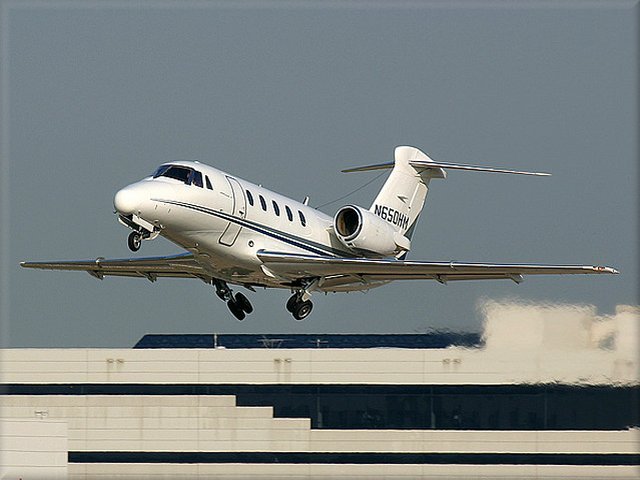
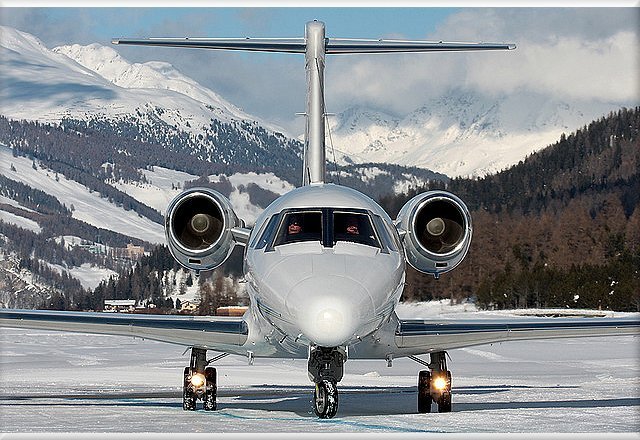





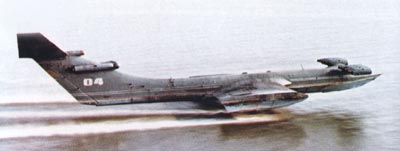
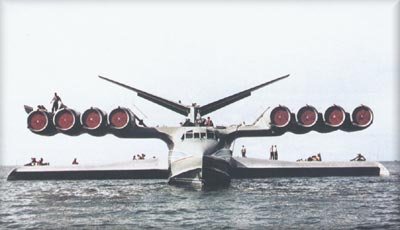


September 5, 2003
